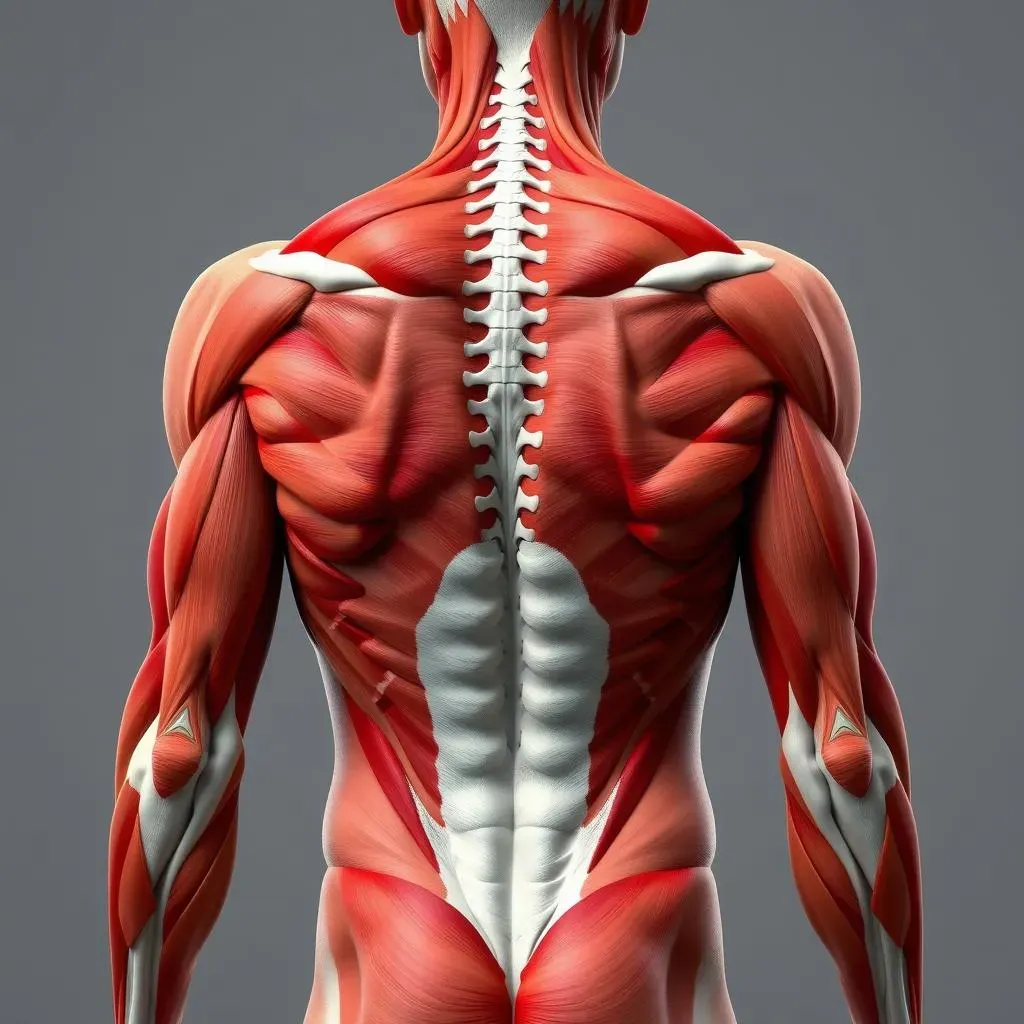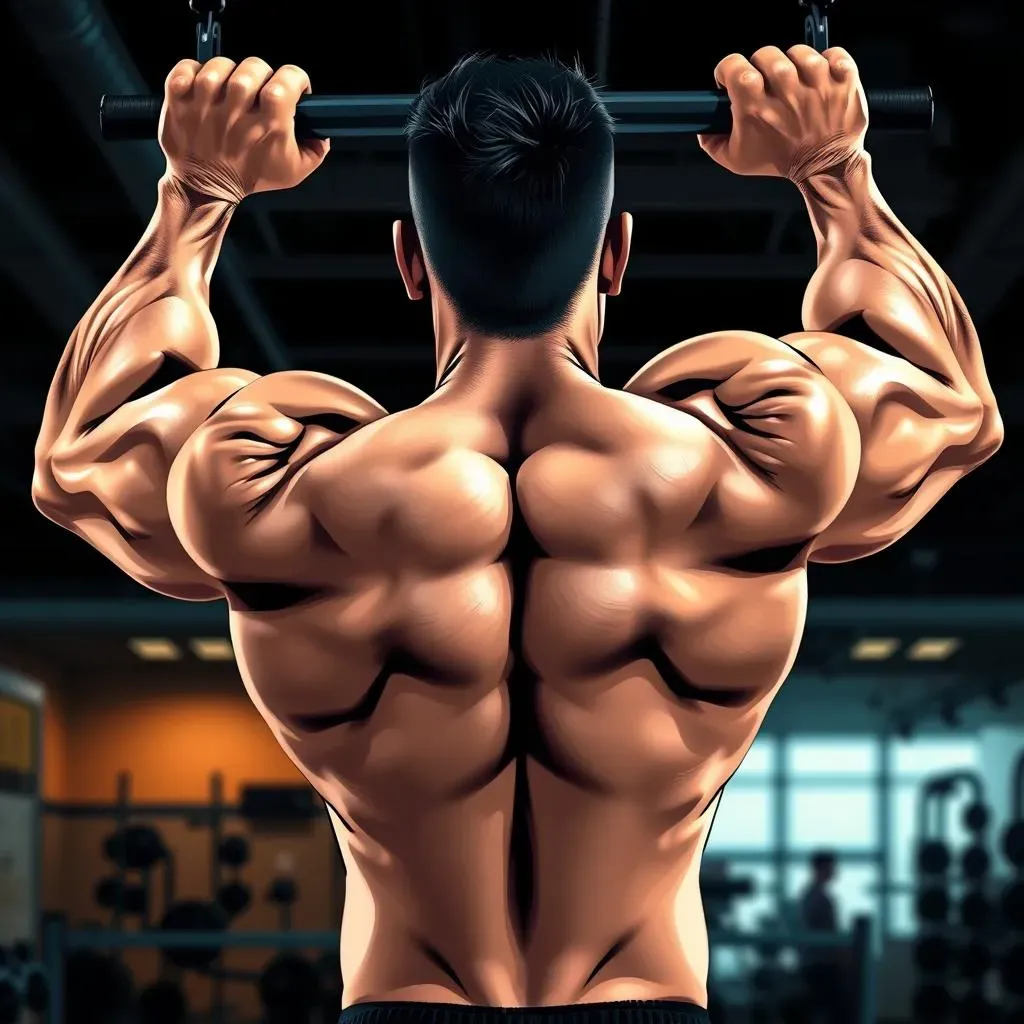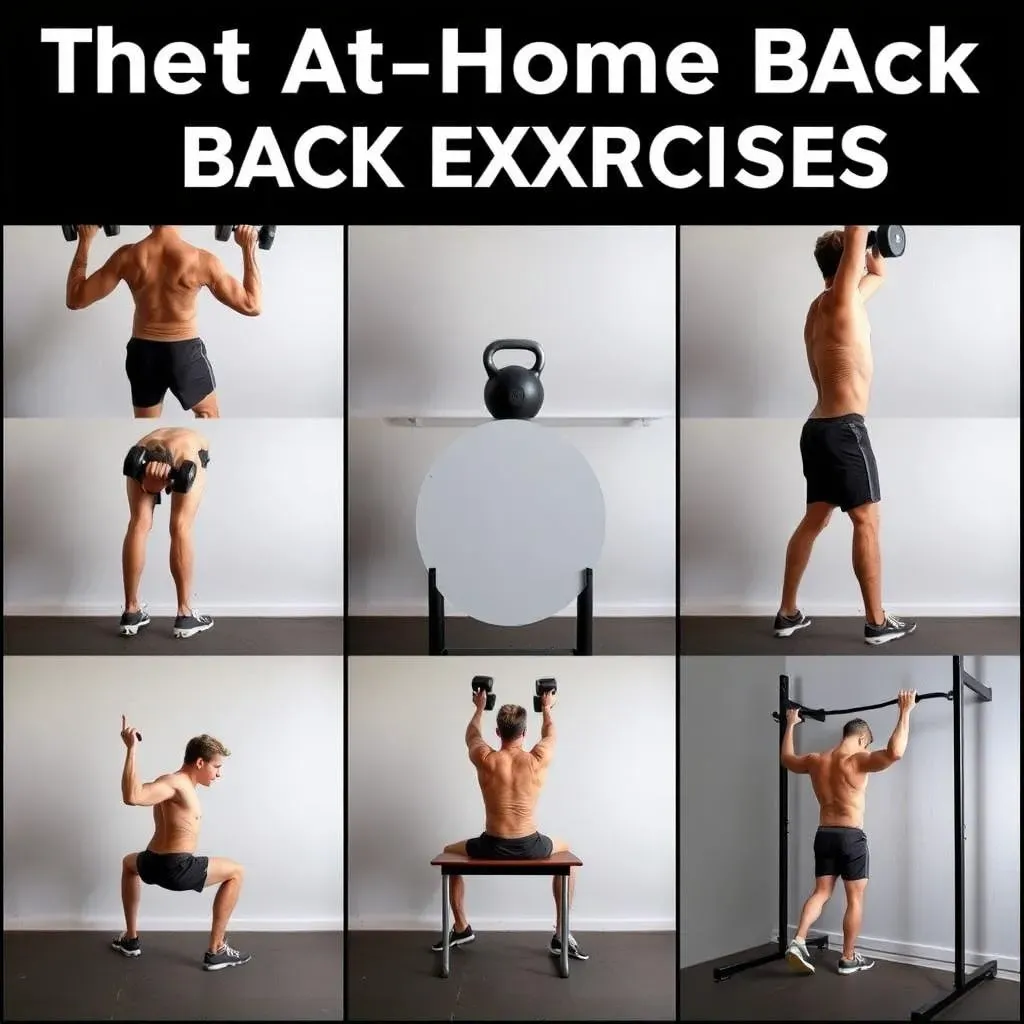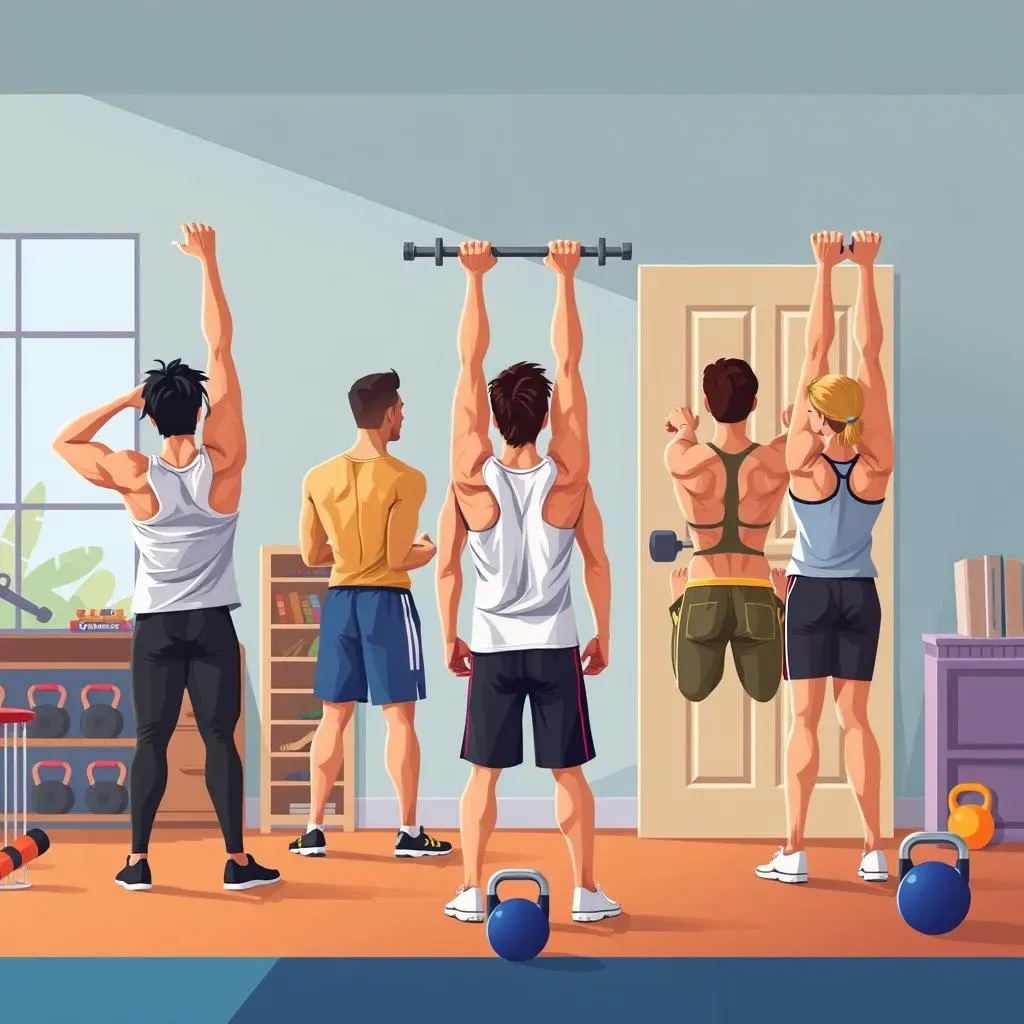Table of Contents
Want a back that looks like it could stop a truck? You're not alone! Many of us dream of a strong, sculpted back, but hitting the gym isn't always an option. That's where the magic of back workouts at home for muscle building comes in. Forget fancy equipment and crowded spaces; we're here to show you how to build an impressive back using just your bodyweight, a few dumbbells, or a kettlebell. We'll explore why training your back is crucial, not just for looks but for overall strength and health. We'll break down the complex muscles that make up your back, and reveal the best ways to train them for maximum growth. Plus, we'll provide you with six killer exercises and three full workout plans to get you started. Ready to transform your back from home? Let's get started!
Why You Need to Train Your Back

Why You Need to Train Your Back
Okay, so you might be thinking, "Why bother with back workouts?" I get it; it's easy to focus on the muscles you see in the mirror, but let me tell you, neglecting your back is like building a house on a shaky foundation. A strong back isn't just about looking good; it’s about being strong and healthy. Think about it: your back is the core of so many movements. It's what helps you lift heavy objects, maintain good posture, and even just sit comfortably at your desk. A weak back? That's a recipe for pain, and nobody wants that! Plus, if you’re into bigger lifts like deadlifts and squats, a strong back is non-negotiable. It’s the key to unlocking your full potential in the gym and in daily life.
Did you know that around 10 million people in England and Scotland experience persistent back pain? That's a lot of people suffering needlessly! Building a strong back is one of the best ways to combat this. It’s like giving your body a natural back brace, helping it to resist all the stresses and strains of everyday life. A strong back will not only help you move better but also prevent injuries. So, if you're serious about getting stronger, feeling better, and maybe even looking a little bit more impressive, then back workouts are essential. Trust me on this one.
Benefit | Description |
|---|---|
Improved Posture | A strong back helps you stand tall and avoid slouching. |
Injury Prevention | Strengthened back muscles reduce the risk of strains and pains. |
Enhanced Lifting | A strong back is essential for heavy lifts like deadlifts and squats. |
Reduced Pain | Regular back workouts can help alleviate and prevent back pain. |
Which Muscles Make up 'the Back'?

Which Muscles Make up 'the Back'?
The Big Picture: More Than You Think
Alright, let's get into the nitty-gritty of what makes up your back. It's not just one big slab of muscle, you know? It's actually a whole team of muscles working together. It's like a well-oiled machine, and each part has its job. We've got the big guys that you might have heard of, like the lats, and then there are some smaller, but equally important, players too. Understanding these muscles will help you target them better during your workouts. Think of it like this: if you're building a house, you need to know the difference between the support beams and the finishing touches, right? Same deal with your back!
We’re talking about muscles that not only make you look strong but also keep you upright and moving correctly. So, when we talk about back workouts, it's not just about making your back look good for the beach, it's about making sure everything is working as it should. It’s about strength, stability, and avoiding those nagging back pains that can ruin your day. Let’s break it down.
Key Players: The Major Back Muscles
Let's zoom in on some of the main muscles you'll be working on. First up, we've got the erector spinae. These run along your spine and are super important for keeping you upright and extending your back. Then there are the multifidus muscles, which are smaller but vital for spinal stability. Don't forget the obliques, which wrap around your sides and help with rotation and bending. And of course, the stars of the show: the latissimus dorsi, or "lats," which are those big, wing-like muscles that give you that V-shape. Finally, we’ve got the trapezius, or "traps," which run from your neck down to the middle of your back and help with shoulder and neck movement.
These aren't all the muscles, but they're the ones you'll be focusing on most during your back workouts at home. Think of each muscle group as a different instrument in an orchestra – each plays its own part, but they all have to work together to make beautiful music. Understanding how these muscles work together will help you create a workout that works for you, and not against you. It's about working smarter, not just harder.
Muscle Group | Function |
|---|---|
Erector Spinae | Spinal extension and posture |
Multifidus | Spinal stability |
Obliques | Rotation and bending |
Latissimus Dorsi (Lats) | Adduction, extension, and internal rotation of the arm |
Trapezius (Traps) | Shoulder and neck movement |
Why This Matters: Putting It All Together
Now, you might be wondering, “Okay, so I know the names, but what does it actually mean for my workout?" Well, it means you can start to tailor your exercises to target specific areas of your back. For instance, rows are great for your lats and traps, while back extensions will hit your erector spinae. When you know which muscle you're working, you can focus on proper form, and that's where the real magic happens. It’s like knowing the ingredients in a recipe – you can’t make a cake without the flour and sugar, right? Similarly, you can't build a strong back without knowing which muscles you need to engage.
So, as you start your back workouts at home, keep these muscles in mind. Pay attention to how each exercise feels and how it engages the different parts of your back. It's about more than just going through the motions; it's about making a mind-muscle connection. And trust me, once you start to feel that connection, you'll be amazed at how much more effective your workouts become. It's all about being intentional with your training.
“The back is a complex and powerful part of the body. Understanding its anatomy is key to building strength and preventing injury.” - Dr. Emily Carter, Sports Medicine Specialist
The Best Way to Train Your Back

The Best Way to Train Your Back
Vertical and Horizontal: The Dynamic Duo
Alright, so you've got the back muscles all figured out, right? Now, let's talk about how to actually train them. The secret? It's all about understanding the different types of movements. Think of it like this: you wouldn't just do squats all day for your legs, would you? You'd mix in lunges, hamstring curls, maybe some calf raises. Well, it's the same with your back. The best approach is to split your back workouts into two main categories: vertical pulling and horizontal pulling. These two types of movements will work your back from all angles, and that's the key to building a well-rounded, strong back.
Vertical pulling, like pull-ups and lat pulldowns, focuses on movements where you're pulling weight down towards your body. This will target your lats, the muscles that give you that V-shape, and it's going to make your back wider. Horizontal pulling, like rows, involves pulling weight towards your chest. This is going to work your traps, rhomboids, and other muscles in the middle of your back, giving you that thickness and definition. By combining these two types of movements, you're hitting all the major back muscles, ensuring balanced development. It’s like having a balanced diet for your muscles – you need variety to thrive!
Why This Matters: The Full Picture
Now, you might be thinking, "Okay, that sounds good, but why is it so important?" Well, focusing on both vertical and horizontal pulling is crucial for balanced muscle development. If you only do one type of pulling movement, you’re going to leave some muscles underdeveloped, which can lead to imbalances and potential injuries. Think about it: if you only do pull-ups, you might have great lats, but you'll be missing out on the thickness that rows provide. And vice versa. It's like trying to build a car with only half the parts – it just won’t work as well!
So, as you plan your back workouts at home, make sure to include both types of pulling movements. This will not only help you build a stronger and more defined back but also improve your overall performance in other exercises. It's like a cheat code for a better workout. Remember, it’s about working smarter, not just harder. So, mix it up, challenge yourself, and watch your back transform. It's all about variety and making sure you're hitting all the angles for maximum muscle growth.
Pulling Type | Examples | Benefits |
|---|---|---|
Vertical Pulling | Pull-ups, Lat Pulldowns | Widens the back, targets lats |
Horizontal Pulling | Rows, Inverted Rows | Builds thickness, targets traps and rhomboids |
"The key to a strong back is not just about lifting heavy, but also about working the muscles from different angles. Don't neglect either vertical or horizontal pulling." - Mark Johnson, Certified Personal Trainer
The 6 Best athome Exercises for Your Back

The 6 Best athome Exercises for Your Back
Alright, let's get to the good stuff! You've learned why training your back is important, what muscles you're working, and the best ways to approach it. Now it's time to dive into the six best at-home exercises that will transform your back. These aren't just any old exercises; they're the tried and tested movements that will give you the most bang for your buck. Whether you're a beginner or a seasoned pro, these exercises can be scaled to fit your fitness level. We're talking about exercises that you can do with minimal equipment, right in your living room or backyard. No more excuses, it's time to get to work!
We'll cover a mix of bodyweight and equipment-based movements to give you a well-rounded routine. From the king of all exercises, the deadlift, to bodyweight variations that will challenge you in new ways, this list has it all. Remember, the key to success isn't just about doing the exercises, but about doing them with proper form. So, pay attention to the details, and get ready to feel the burn in your back. Let's get into it!
Exercise | Type |
|---|---|
Deadlift | Horizontal Pull |
Bent-Over Row | Horizontal Pull |
Kettlebell Swings | Dynamic Full-Body |
Inverted Row | Horizontal Pull |
Renegade Row | Horizontal Pull |
Wide-Grip Pull-ups | Vertical Pull |
